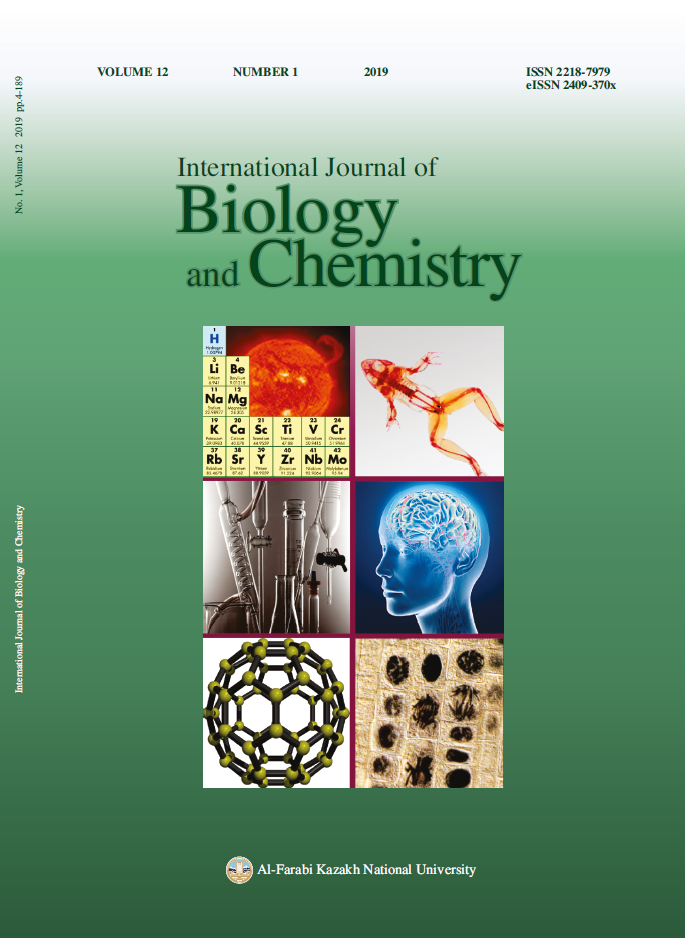GC-MS analysis of the lipophilic compounds of medicinal plant Rhodiola rosea L.
DOI:
https://doi.org/10.26577/ijbch-2019-1-i16Abstract
Rhodiola (R.) rosea L. is one of the most popular adaptogenic agents. Rhodiola rosea L. (fam. Crassulaceae) commonly known as golden root or roseroot, is an insect-pollinated dioecious perennial that has been traditionally used as an immunomodulatory agent in many countries, including Kazakhstan. Plant extracts can be used both against somatic and infectious diseases, psychiatric and neurological diseases as well as in healthy people to relieve fatigue and increase concentration, memory, and productivity. There is growing evidence that the long-term effects of stressful life events and depression are associated with significant behavioral, endocrinological and neurobiological changes in human. R. rosea is a relatively rare and valuable medicinal plant and grows at high altitudes (up to 2280 m above the sea level) in the arctic and mountainous regions of Central Asia, Europe and North America. Study of the phytochemical composition of R. rosea is required in order to introduce it into official practice. Several mechanisms of action that are potentially responsible for the observed stress resistance, anti-aging and anti-cancer effects of R. rosea extracts and its active compounds have been identified in in vitro cell culture systems and on in vivo animal models. R. rosea extracts and its main biologically active compound salidroside appear to have multi-targeted effects. The results of our research showed that R. rosea in addition to adaptogenic, has several other pharmacological properties: antioxidant, antidepressant, immunomodulatory. Phytochemical study of R. rosea in Kazakhstan has been conducted for the first time. As a result of the conducted work, 28 compounds were identified in its composition.
Downloads
How to Cite
Issue
Section
License
ааа





